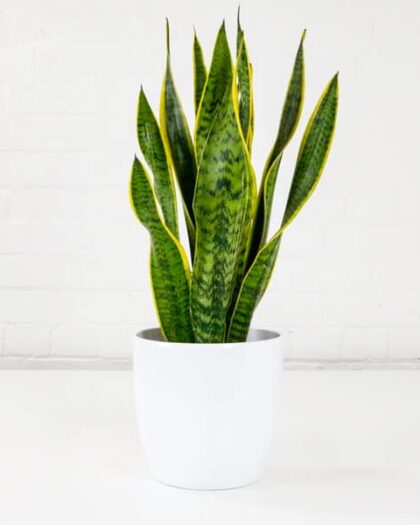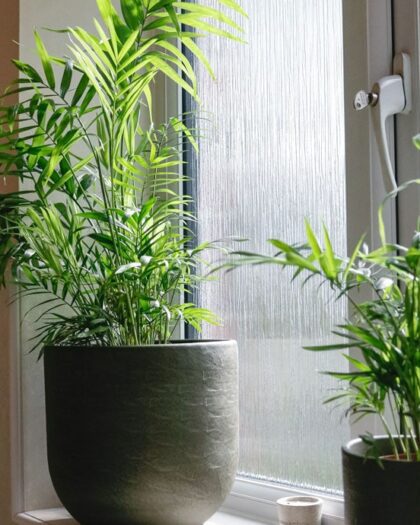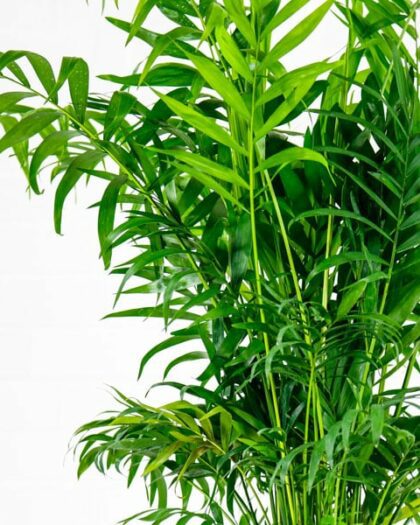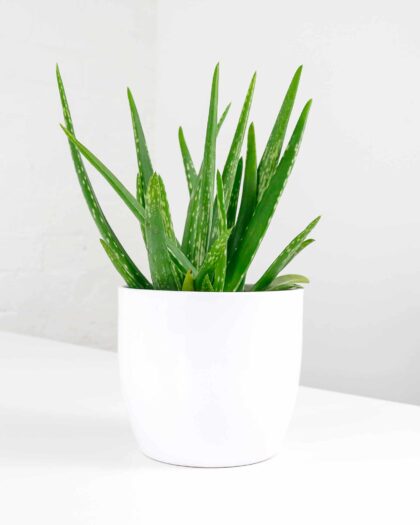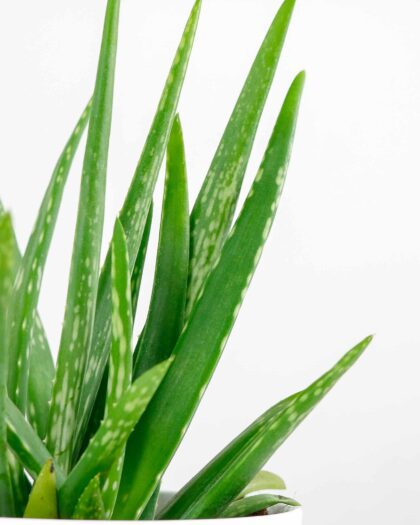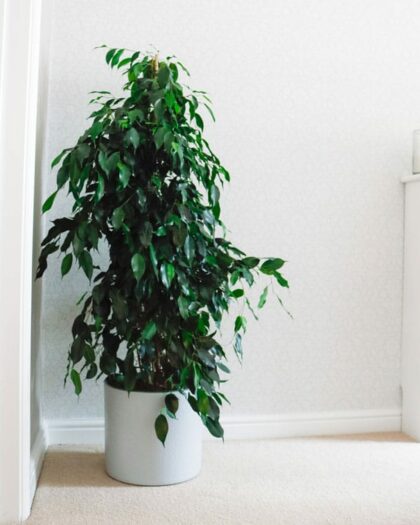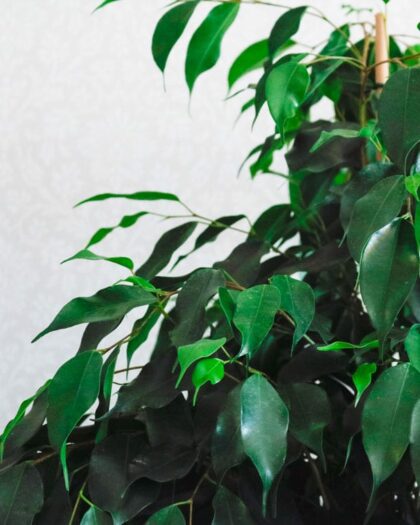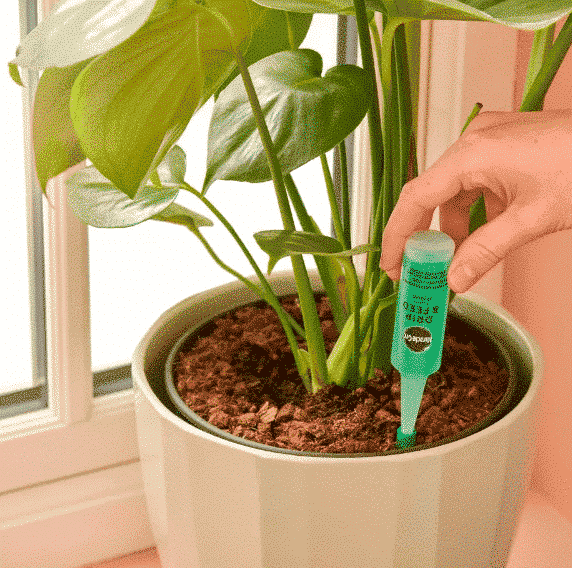Why do we need to purify the air in our homes?
We may not always be aware of it, but our homes can be filled with Volatile Organic Compounds (VOCs) which can have compounding effects on our long-term health.
What are volatile organic compounds?
Volatile organic compounds are organic chemicals that have a high vapour pressure at ordinary room temperature. Their high vapour pressure results from a low boiling point, which causes large numbers of molecules to evaporate from the liquid or solid form of the compound and enter the surrounding air (a trait known as volatility). For example, formaldehyde, which evaporates from paint and releases from materials like resin, has a boiling point of only –19 °C (–2 °F).
They include both man-made and naturally occurring chemical compounds. Most scents or odours are VOCs. VOCs play an important role in communication between plants and in messages from plants to animals. Some VOCs are dangerous to human health or cause harm to the environment. Anthropogenic VOCs are regulated by law, especially indoors, where concentrations are the highest.
Harmful VOCs typically are not acutely toxic, but have compounding long-term health effects. Because the concentrations are usually low and the symptoms slow to develop, research into VOCs and their effects is difficult.
Which Volatile Organic Compounds's can my house plants purify?
Benzene
Benzene is a natural constituent of crude oil and is one of the elementary petrochemicals.
The word “benzene” derives from “gum benzoin” (benzoin resin), an aromatic resin known to European pharmacists and perfumers since the 16th century as a product of southeast Asia. n 1903, Ludwig Roselius popularized the use of benzene to decaffeinate coffee. This discovery led to the production of Sanka. This process was later discontinued. Benzene was historically used as a significant component in many consumer products such as Liquid Wrench, several paint strippers, rubber cements, spot removers, and other products. Manufacture of some of these benzene-containing formulations ceased in about 1950, although Liquid Wrench continued to contain significant amounts of benzene until the late 1970s.
Benzene is classified as a carcinogen, which increases the risk of cancer and other illnesses, and is also a notorious cause of bone marrow failure. Substantial quantities of epidemiologic, clinical, and laboratory data link benzene to aplastic anemia, acute leukemia, bone marrow abnormalities and cardiovascular disease. The specific hematologic malignancies that benzene is associated with include: acute myeloid leukemia (AML), aplastic anemia, myelodysplastic syndrome (MDS), acute lymphoblastic leukemia (ALL), and chronic myeloid leukemia (CML).
According to the Agency for Toxic Substances and Disease Registry (ATSDR) (2007), benzene is both a man-made and naturally occurring chemical from processes that include: volcanic eruptions, wild fires, synthesis of chemicals such as phenol, production of synthetic fibers, and fabrication of rubbers, lubricants, pesticides, medications, and dyes. The major sources of benzene exposure are tobacco smoke, automobile service stations, exhaust from motor vehicles, and industrial emissions; however, ingestion and dermal absorption of benzene can also occur through contact with contaminated water. Benzene is hepatically metabolized and excreted in the urine.
Which houseplants remove Benzene from the air?
The plants known to remove Benzene from the air, from NASA’s clean air study include; English Ivy, Devil’s ivy, Peace lily, Chinese Evergreen, Areca Palm, Parlour Palm, Lady Palm, Snake Plant, Dragon Tree, Corn Plant / Mass Cane, Barberton Daisy, Chrysanthemum, Aloe Vera, Janet Craig, Warneckei.
-
Indoor Plants, 35% Off, Air Purifying Plants, Bedroom Plants, Big Leaf Plants, Child & Pet Friendly Plants, Easy Care Plants, Hallway Plants, House Plant Sales, Large Indoor Plants, Living Room Plants, Palms, Shade Liking Plants
Areca Palm
Dypsis Lutescens
From £4.99 Select options This product has multiple variants. The options may be chosen on the product page -
Indoor Plants, Air Purifying Plants, Bedroom Plants, Easy Care Plants, Hallway Plants, Large Indoor Plants, Living Room Plants, Medium Sized Plants, New Arrivals, Unusual Plants
Dragon Tree
Dracaena Marginata
From £7.50 Select options This product has multiple variants. The options may be chosen on the product page -
Indoor Plants, Air Purifying Plants, Bathroom Plants, Bedroom Plants, Big Leaf Plants, Easy Care Plants, Hallway Plants, Home Office Plants, Kitchen Plants, Living Room Plants, Most Popular Plants, Plant Sale, Small Indoor Plants, Unusual Plants
Snake Plant
Sansevieria Trifasciata Laurentii
From £7.49 Select options This product has multiple variants. The options may be chosen on the product page -
Indoor Plants, Air Purifying Plants, Bedroom Plants, Big Leaf Plants, Easy Care Plants, Flowering Plants, Hallway Plants, Home Office Plants, Kitchen Plants, Living Room Plants, Medium Sized Plants, Most Popular Plants, Plant Sale, Shade Liking Plants, Small Indoor Plants
Peace Lily
Spathiphyllum
From £7.49 Select options This product has multiple variants. The options may be chosen on the product page -
Indoor Plants, Air Purifying Plants, Bathroom Plants, Bedroom Plants, Climbing Plants, Easy Care Plants, Hanging Plants, Living Room Plants, Medium Sized Plants, Most Popular Plants, Shade Liking Plants, Trailing Plants
Devils Ivy
Epipremnum Aureum
From £14.99 Select options This product has multiple variants. The options may be chosen on the product page -
Indoor Plants, Air Purifying Plants, Bedroom Plants, Child & Pet Friendly Plants, Easy Care Plants, Hallway Plants, Home Office Plants, Living Room Plants, Medium Sized Plants, Most Popular Plants, New Arrivals, Palms, Shade Liking Plants
Parlour Palm
Chamaedorea Elegans
From £7.50 Select options This product has multiple variants. The options may be chosen on the product page -
Indoor Plants, Air Purifying Plants, Climbing Plants, Hanging Plants, Kitchen Plants, Living Room Plants, Medium Sized Plants, Outdoor Plants, Plant Sale, Small Indoor Plants, Trailing Plants
English Ivy
Hedera Helix
£9.99Original price was: £9.99.£9.00Current price is: £9.00. Add to basket -
Indoor Plants, Air Purifying Plants, Bedroom Plants, Big Leaf Plants, Easy Care Plants, Living Room Plants, Medium Sized Plants, Shade Liking Plants
Chinese Evergreen
Aglaonema 'Silver Bay'
From £22.99 Select options This product has multiple variants. The options may be chosen on the product page -
Aloe Vera Barbadensis
Aloe Aristata / Aloe Barbedensis
£19.99Original price was: £19.99.£9.99Current price is: £9.99. Add to basket
Formaldehyde
Formaldehyde is a pungent-smelling colourless gas and an important precursor to many other materials and chemical compounds.
In 1996, the installed capacity for the production of formaldehyde was estimated at 8.7 million tons per year. It is mainly used in the production of industrial resins, e.g., for particle board and coatings.
In view of its widespread use, toxicity, and volatility, formaldehyde poses a significant danger to human health. In 2011, the US National Toxicology Program described formaldehyde as “known to be a human carcinogen”.
Formaldehyde-based materials are key to the manufacture of automobiles, and used to make components for the transmission, electrical system, engine block, door panels, axles and brake shoes. It is used as the wet-strength resin added to sanitary paper products such as (listed in increasing concentrations injected into the paper machine headstock chest) facial tissue, table napkins, and roll towels. They are also foamed to make insulation, or cast into moulded products. Production of formaldehyde resins accounts for more than half of formaldehyde consumption.
Which houseplants remove Formaldehyde from the air?
The plants known to remove Formaldehyde from the air, from NASA’s clean air study include; Dwarf Date Palm, Areca Palm, Boston Fern, Kimberley Queen Fern, English Ivy, Spider Plant, Devil’s Ivy, Peace lily, Flamingo Lily, Chinese Evergreen, Bamboo Palm, Parlour Palm, Lady Palm, Snake Plant, Heartleaf philodendron, Selloum philodendron, Elephant ear philodendron, Dragon Tree, Mass Cane, Weeping Fig, Barbeton Daisy, Chrysanthemum, Rubber plant, Dendrobium Orchids, Dumb Canes, King of hearts, Moth orchids, Aloe Vera, Janet Craig, Warneckei.
-
Indoor Plants, 35% Off, Air Purifying Plants, Bedroom Plants, Big Leaf Plants, Child & Pet Friendly Plants, Easy Care Plants, Hallway Plants, House Plant Sales, Large Indoor Plants, Living Room Plants, Palms, Shade Liking Plants
Areca Palm
Dypsis Lutescens
From £4.99 Select options This product has multiple variants. The options may be chosen on the product page -
Indoor Plants, Air Purifying Plants, Bedroom Plants, Big Leaf Plants, Easy Care Plants, Hallway Plants, Large Indoor Plants, Living Room Plants, Medium Sized Plants, Plant Sale, Shade Liking Plants, Unusual Plants
Rubber Plant
Ficus Elastica
From £9.99 Select options This product has multiple variants. The options may be chosen on the product page -
Indoor Plants, Air Purifying Plants, Bedroom Plants, Easy Care Plants, Hallway Plants, Large Indoor Plants, Living Room Plants, Medium Sized Plants, New Arrivals, Unusual Plants
Dragon Tree
Dracaena Marginata
From £7.50 Select options This product has multiple variants. The options may be chosen on the product page -
Indoor Plants, Air Purifying Plants, Bathroom Plants, Bedroom Plants, Big Leaf Plants, Easy Care Plants, Hallway Plants, Home Office Plants, Kitchen Plants, Living Room Plants, Most Popular Plants, Plant Sale, Small Indoor Plants, Unusual Plants
Snake Plant
Sansevieria Trifasciata Laurentii
From £7.49 Select options This product has multiple variants. The options may be chosen on the product page -
Indoor Plants, Air Purifying Plants, Bedroom Plants, Big Leaf Plants, Easy Care Plants, Flowering Plants, Hallway Plants, Home Office Plants, Kitchen Plants, Living Room Plants, Medium Sized Plants, Most Popular Plants, Plant Sale, Shade Liking Plants, Small Indoor Plants
Peace Lily
Spathiphyllum
From £7.49 Select options This product has multiple variants. The options may be chosen on the product page -
Indoor Plants, Air Purifying Plants, Bathroom Plants, Bedroom Plants, Climbing Plants, Easy Care Plants, Hanging Plants, Living Room Plants, Medium Sized Plants, Most Popular Plants, Shade Liking Plants, Trailing Plants
Devils Ivy
Epipremnum Aureum
From £14.99 Select options This product has multiple variants. The options may be chosen on the product page -
Indoor Plants, Air Purifying Plants, Bathroom Plants, Child & Pet Friendly Plants, Home Office Plants, Kitchen Plants, Living Room Plants, Shade Liking Plants, Small Indoor Plants
Boston Fern
Nephrolepsis Exaltata
£9.99Original price was: £9.99.£9.00Current price is: £9.00. Add to basket -
Indoor Plants, Air Purifying Plants, Bathroom Plants, Bedroom Plants, Child & Pet Friendly Plants, Easy Care Plants, Hallway Plants, Home Office Plants, Kitchen Plants, Living Room Plants, Small Indoor Plants
Spider Plant
Chlorophytum Comosum
£8.99Original price was: £8.99.£8.00Current price is: £8.00. Add to basket -
Indoor Plants, Air Purifying Plants, Bedroom Plants, Child & Pet Friendly Plants, Easy Care Plants, Hallway Plants, Home Office Plants, Living Room Plants, Medium Sized Plants, Most Popular Plants, New Arrivals, Palms, Shade Liking Plants
Parlour Palm
Chamaedorea Elegans
From £7.50 Select options This product has multiple variants. The options may be chosen on the product page -
Indoor Plants, Air Purifying Plants, Climbing Plants, Hanging Plants, Kitchen Plants, Living Room Plants, Medium Sized Plants, Outdoor Plants, Plant Sale, Small Indoor Plants, Trailing Plants
English Ivy
Hedera Helix
£9.99Original price was: £9.99.£9.00Current price is: £9.00. Add to basket -
Indoor Plants, Air Purifying Plants, Bathroom Plants, Bedroom Plants, Climbing Plants, Easy Care Plants, Hanging Plants, Living Room Plants, Medium Sized Plants, Most Popular Plants, Plant Sale, Small Indoor Plants, Trailing Plants
Heartleaf Philodendron
Philonendron Scandens
From £14.99 Select options This product has multiple variants. The options may be chosen on the product page -
Indoor Plants, Air Purifying Plants, Bedroom Plants, Hallway Plants, Large Indoor Plants, Living Room Plants, Unusual Plants
Weeping Fig ‘Danielle’
Ficus Benjamina 'Danielle'
From £64.99 Select options This product has multiple variants. The options may be chosen on the product page -
Indoor Plants, Air Purifying Plants, Bedroom Plants, Big Leaf Plants, Easy Care Plants, Living Room Plants, Medium Sized Plants, Shade Liking Plants
Chinese Evergreen
Aglaonema 'Silver Bay'
From £22.99 Select options This product has multiple variants. The options may be chosen on the product page -
Indoor Plants, Air Purifying Plants, Bedroom Plants, Big Leaf Plants, Easy Care Plants, Home Office Plants, Living Room Plants, Medium Sized Plants, Small Indoor Plants
Dumb Cane
Dieffenbachia
£24.99Original price was: £24.99.£24.00Current price is: £24.00. Add to basket -
Aloe Vera Barbadensis
Aloe Aristata / Aloe Barbedensis
£19.99Original price was: £19.99.£9.99Current price is: £9.99. Add to basket
Trichloroethylene (TCE)
Trichloroethylene is a clear, colourless non-flammable liquid with a chloroform-like sweet smell.
Groundwater and drinking water contamination from industrial discharge including trichloroethylene is a major concern for human health and has precipitated numerous incidents and lawsuits.
When inhaled, trichloroethylene produces central nervous system depression resulting in general anesthesia. Its high blood solubility results in a less desirable slower induction of anesthesia. At low concentrations it is relatively non-irritating to the respiratory tract. Higher concentrations result in tachypnea (abnormal rapid breathing), headache, dizziness, and confusion and progressing with increasing exposure to unconsciousness. Much of what is known about the human health effects of trichloroethylene is based on occupational exposures. Beyond the effects to the central nervous system, workplace exposure to trichloroethylene has been associated with toxic effects in the liver and kidney. Research from Cancer bioassays performed by the National Cancer Institute (later the National Toxicology Program) showed that exposure to trichloroethylene is carcinogenic in animals, producing liver cancer in mice, and kidney cancer in rats.
Trichloroethylene is mainly used for the vapour degreasing and cold cleaning of manufactured metal parts (80–95% of consumption). Other applications include industrial dry cleaning, printing, the production of printing ink, extraction processes, paint production and textile printing. Consumer products that contain trichloroethylene include typewriter correction fluids, paint removers/strippers, adhesives, stain removers, and rug-cleaning fluids, from WHO Regional Office for Europe, Copenhagen, Denmark, 2000.
Which houseplants remove Trichloroethylene from the air?
The plants known to remove Formaldehyde from the air, from NASA’s clean air study include; Dwarf Date Palm, Areca Palm, Boston Fern, Kimberley Queen Fern, English Ivy, Spider Plant, Devil’s Ivy, Peace lily, Flamingo Lily, Chinese Evergreen, Bamboo Palm, Parlour Palm, Lady Palm, Snake Plant, Heartleaf philodendron, Selloum philodendron, Elephant ear philodendron, Dragon Tree, Mass Cane, Weeping Fig, Barbeton Daisy, Chrysanthemum, Rubber plant, Dendrobium Orchids, Dumb Canes, King of hearts, Moth orchids, Aloe Vera, Janet Craig, Warneckei.
-
Indoor Plants, 35% Off, Air Purifying Plants, Bedroom Plants, Big Leaf Plants, Child & Pet Friendly Plants, Easy Care Plants, Hallway Plants, House Plant Sales, Large Indoor Plants, Living Room Plants, Palms, Shade Liking Plants
Areca Palm
Dypsis Lutescens
From £4.99 Select options This product has multiple variants. The options may be chosen on the product page -
Indoor Plants, Air Purifying Plants, Bedroom Plants, Big Leaf Plants, Easy Care Plants, Hallway Plants, Large Indoor Plants, Living Room Plants, Medium Sized Plants, Plant Sale, Shade Liking Plants, Unusual Plants
Rubber Plant
Ficus Elastica
From £9.99 Select options This product has multiple variants. The options may be chosen on the product page -
Indoor Plants, Air Purifying Plants, Bedroom Plants, Easy Care Plants, Hallway Plants, Large Indoor Plants, Living Room Plants, Medium Sized Plants, New Arrivals, Unusual Plants
Dragon Tree
Dracaena Marginata
From £7.50 Select options This product has multiple variants. The options may be chosen on the product page -
Indoor Plants, Air Purifying Plants, Bathroom Plants, Bedroom Plants, Big Leaf Plants, Easy Care Plants, Hallway Plants, Home Office Plants, Kitchen Plants, Living Room Plants, Most Popular Plants, Plant Sale, Small Indoor Plants, Unusual Plants
Snake Plant
Sansevieria Trifasciata Laurentii
From £7.49 Select options This product has multiple variants. The options may be chosen on the product page -
Indoor Plants, Air Purifying Plants, Bedroom Plants, Big Leaf Plants, Easy Care Plants, Flowering Plants, Hallway Plants, Home Office Plants, Kitchen Plants, Living Room Plants, Medium Sized Plants, Most Popular Plants, Plant Sale, Shade Liking Plants, Small Indoor Plants
Peace Lily
Spathiphyllum
From £7.49 Select options This product has multiple variants. The options may be chosen on the product page -
Indoor Plants, Air Purifying Plants, Bathroom Plants, Bedroom Plants, Climbing Plants, Easy Care Plants, Hanging Plants, Living Room Plants, Medium Sized Plants, Most Popular Plants, Shade Liking Plants, Trailing Plants
Devils Ivy
Epipremnum Aureum
From £14.99 Select options This product has multiple variants. The options may be chosen on the product page -
Indoor Plants, Air Purifying Plants, Bathroom Plants, Child & Pet Friendly Plants, Home Office Plants, Kitchen Plants, Living Room Plants, Shade Liking Plants, Small Indoor Plants
Boston Fern
Nephrolepsis Exaltata
£9.99Original price was: £9.99.£9.00Current price is: £9.00. Add to basket -
Indoor Plants, Air Purifying Plants, Bathroom Plants, Bedroom Plants, Child & Pet Friendly Plants, Easy Care Plants, Hallway Plants, Home Office Plants, Kitchen Plants, Living Room Plants, Small Indoor Plants
Spider Plant
Chlorophytum Comosum
£8.99Original price was: £8.99.£8.00Current price is: £8.00. Add to basket -
Indoor Plants, Air Purifying Plants, Bedroom Plants, Child & Pet Friendly Plants, Easy Care Plants, Hallway Plants, Home Office Plants, Living Room Plants, Medium Sized Plants, Most Popular Plants, New Arrivals, Palms, Shade Liking Plants
Parlour Palm
Chamaedorea Elegans
From £7.50 Select options This product has multiple variants. The options may be chosen on the product page -
Indoor Plants, Air Purifying Plants, Climbing Plants, Hanging Plants, Kitchen Plants, Living Room Plants, Medium Sized Plants, Outdoor Plants, Plant Sale, Small Indoor Plants, Trailing Plants
English Ivy
Hedera Helix
£9.99Original price was: £9.99.£9.00Current price is: £9.00. Add to basket -
Indoor Plants, Air Purifying Plants, Bathroom Plants, Bedroom Plants, Climbing Plants, Easy Care Plants, Hanging Plants, Living Room Plants, Medium Sized Plants, Most Popular Plants, Plant Sale, Small Indoor Plants, Trailing Plants
Heartleaf Philodendron
Philonendron Scandens
From £14.99 Select options This product has multiple variants. The options may be chosen on the product page -
Indoor Plants, Air Purifying Plants, Bedroom Plants, Hallway Plants, Large Indoor Plants, Living Room Plants, Unusual Plants
Weeping Fig ‘Danielle’
Ficus Benjamina 'Danielle'
From £64.99 Select options This product has multiple variants. The options may be chosen on the product page -
Indoor Plants, Air Purifying Plants, Bedroom Plants, Big Leaf Plants, Easy Care Plants, Living Room Plants, Medium Sized Plants, Shade Liking Plants
Chinese Evergreen
Aglaonema 'Silver Bay'
From £22.99 Select options This product has multiple variants. The options may be chosen on the product page -
Aloe Vera Barbadensis
Aloe Aristata / Aloe Barbedensis
£19.99Original price was: £19.99.£9.99Current price is: £9.99. Add to basket
Xylene
Xylene is a colorless, flammable liquid, some of which are used in construction and household products.
The main effect of inhaling xylene vapor is depression of the central nervous system (CNS), with symptoms such as headache, dizziness, nausea and vomiting. At an exposure low concentration (100 ppm), one may experience nausea or a headache. At an high concentration exposure (between 200 and 500 ppm), symptoms can include feeling “high”, dizziness, weakness, irritability, vomiting, and slowed reaction time.
Long-term exposure may lead to headaches, irritability, depression, insomnia, agitation, extreme tiredness, tremors, hearing loss, impaired concentration and short-term memory loss.
Xylene application incude the printing, rubber and leather industries. It can be found in ink, thinning paints, varnishes and cleaning agents, e.g., for steel and silicon wafers.
Which houseplants remove Xylene from the air?
The plants known to remove xylene from the air, from NASA’s clean air study include; Dwarf Date Palm, Areca Palm, Boston Fern, Kimberly Queen Fern, English Ivy, Spider Plant, Devil’s Ivy, Peace Lily, Flamingo Lily, Bamboo Palm, Parlour Palm, Lady Palm, Snake Plant, Dragon Tree, Mass Cane, Weeping Fig, Florist’s Chrysanthemum, Dendrobium orchids, Dumb Cane, King of Hearts, Moth Orchids, Janet Craig and Warneckei.
-
Indoor Plants, 35% Off, Air Purifying Plants, Bedroom Plants, Big Leaf Plants, Child & Pet Friendly Plants, Easy Care Plants, Hallway Plants, House Plant Sales, Large Indoor Plants, Living Room Plants, Palms, Shade Liking Plants
Areca Palm
Dypsis Lutescens
From £4.99 Select options This product has multiple variants. The options may be chosen on the product page -
Indoor Plants, Air Purifying Plants, Bedroom Plants, Easy Care Plants, Hallway Plants, Large Indoor Plants, Living Room Plants, Medium Sized Plants, New Arrivals, Unusual Plants
Dragon Tree
Dracaena Marginata
From £7.50 Select options This product has multiple variants. The options may be chosen on the product page -
Indoor Plants, Air Purifying Plants, Bathroom Plants, Bedroom Plants, Big Leaf Plants, Easy Care Plants, Hallway Plants, Home Office Plants, Kitchen Plants, Living Room Plants, Most Popular Plants, Plant Sale, Small Indoor Plants, Unusual Plants
Snake Plant
Sansevieria Trifasciata Laurentii
From £7.49 Select options This product has multiple variants. The options may be chosen on the product page -
Indoor Plants, Air Purifying Plants, Bedroom Plants, Big Leaf Plants, Easy Care Plants, Flowering Plants, Hallway Plants, Home Office Plants, Kitchen Plants, Living Room Plants, Medium Sized Plants, Most Popular Plants, Plant Sale, Shade Liking Plants, Small Indoor Plants
Peace Lily
Spathiphyllum
From £7.49 Select options This product has multiple variants. The options may be chosen on the product page -
Indoor Plants, Air Purifying Plants, Bathroom Plants, Bedroom Plants, Climbing Plants, Easy Care Plants, Hanging Plants, Living Room Plants, Medium Sized Plants, Most Popular Plants, Shade Liking Plants, Trailing Plants
Devils Ivy
Epipremnum Aureum
From £14.99 Select options This product has multiple variants. The options may be chosen on the product page -
Indoor Plants, Air Purifying Plants, Bedroom Plants, Child & Pet Friendly Plants, Easy Care Plants, Hallway Plants, Home Office Plants, Living Room Plants, Medium Sized Plants, Most Popular Plants, New Arrivals, Palms, Shade Liking Plants
Parlour Palm
Chamaedorea Elegans
From £7.50 Select options This product has multiple variants. The options may be chosen on the product page -
Indoor Plants, Air Purifying Plants, Climbing Plants, Hanging Plants, Kitchen Plants, Living Room Plants, Medium Sized Plants, Outdoor Plants, Plant Sale, Small Indoor Plants, Trailing Plants
English Ivy
Hedera Helix
£9.99Original price was: £9.99.£9.00Current price is: £9.00. Add to basket -
Aloe Vera Barbadensis
Aloe Aristata / Aloe Barbedensis
£19.99Original price was: £19.99.£9.99Current price is: £9.99. Add to basket
Ammonia
Ammonia is a common nitrogenous waste, particularly among aquatic organisms, and it contributes significantly to the nutritional needs of terrestrial organisms by serving as a precursor to food and fertilizers.
Liquid ammonia is dangerous because it is hygroscopic and because it can cause caustic burns. See Gas carrier § Health effects of specific cargoes carried on gas carriers for more information.
Ammonia even at dilute concentrations is highly toxic to aquatic animals, and for this reason it is classified as dangerous for the environment.
The toxicity of ammonia solutions does not usually cause problems for humans and other mammals, as a specific mechanism exists to prevent its build-up in the bloodstream.
Ammonia can be found in plant fertilizers and cleaning products for glass, porcelain and stainless steel.
Which houseplants remove Ammonia from the air?
The plants known to remove ammonia from the air, from NASA’s clean air study include; Peace Lily, Flamingo Lily, Parlour Palm, Lady Palm and Florist’s Chrysanthemum.
-
Indoor Plants, Air Purifying Plants, Bedroom Plants, Big Leaf Plants, Easy Care Plants, Flowering Plants, Hallway Plants, Home Office Plants, Kitchen Plants, Living Room Plants, Medium Sized Plants, Most Popular Plants, Plant Sale, Shade Liking Plants, Small Indoor Plants
Peace Lily
Spathiphyllum
From £7.49 Select options This product has multiple variants. The options may be chosen on the product page -
Indoor Plants, Air Purifying Plants, Bedroom Plants, Child & Pet Friendly Plants, Easy Care Plants, Hallway Plants, Home Office Plants, Living Room Plants, Medium Sized Plants, Most Popular Plants, New Arrivals, Palms, Shade Liking Plants
Parlour Palm
Chamaedorea Elegans
From £7.50 Select options This product has multiple variants. The options may be chosen on the product page






